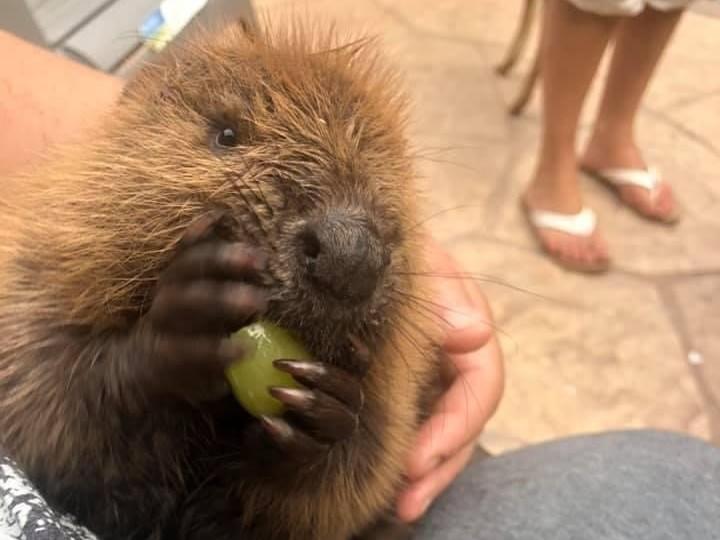@beaverbabyfurrylove Beave is not a pet. Go to www.raisingthewildny.com or Raising The Wild YouTube videos for his rescue and rehab plan. #fyp #PajamaJam
Section Branding
Header Content
Meet Beave, The Internet's Most Famous Beaver
Primary Content
Leave it to a beaver to find new ways to build dams.
That much was revealed by Nancy Coyne, who's rehabilitating a beaver in her home in New York's Hudson Valley. Coyne's videos of Beave the beaver on TikTok have quickly racked up millions of views.
Beave has taken to building dams out of whatever's available around the house.
"Beave started just kind of collecting anything that he could get his little paws on," Coyne tells Lulu Garcia-Navarro on Weekend Edition. "So anything that was at his height, you know, around the house he would grab. He does seem to like doorways. He dams a lot in front of my front door."
Coyne started a "dam pile" to make life easier for the dam-builder, "so he doesn't have to go around the house and collect everything."
Coyne, who is a wildlife rehabilitator with Raising the Wild, makes clear that Beave is not a pet. She's raising him for about two years because she suspects he was orphaned.
"I received a call, as I normally do for a lot of rehabs, and the woman said that she had found a baby beaver on the side of the road," Coyne says. "So I said, 'Of course you can bring it to me.' "
When the woman arrived, "she was carrying this little box. So I opened up the box. And sure enough, there was a little baby beaver, no bigger than the size of a russet potato."
Coyne's task now is to help Beave learn what he needs to know so he can reenter the wild when he's ready.
Things like swimming under the ice:
Or eating:
Beave likes kale. He makes whiny noises sometimes:
"Beavers live in large colonies, which are their families," Coyne says. "What those little baby beaver kits do is they whine. And that whine will encourage their parents and their older siblings to give up their food."
And because Beave is without a family, he spends a lot of time indoors with Coyne. One reason why is because normally beavers need other beavers to help stay warm in the winter.
The other reason is that beavers are highly social animals.
"They seek out the nurturing, the close contact that they need to thrive," Coyne says. "Without that, they can die from something called isolation stress. What will happen is they will shut down, they will stop eating and then they will slowly die."
With Coyne stepping in, beavers "will bond with the rehabber. So Beave is bonded with me much like he would his mom. So in order to raise him like his mom would, he has to be close to me."
Beave was only about 3 weeks old when he was rescued back in May. Coyne will gradually give Beave more outdoor experience until he's ready to go completely solo.
"Beaver kits typically will leave their colonies at the age of between 2 and 3 years old. But around the age of 2, his hormones should start to kick in like they would in the wild. And he's going to want to set out to find a mate."
Coyne will then start "a very slow, soft release process." Beave will spend time at a nearby pond and then hopefully find a mate and start a family of his own.
Danny Hensel and Hadeel Al-Shalchi produced and edited the audio interview.
Copyright 2020 NPR. To see more, visit https://www.npr.org.

